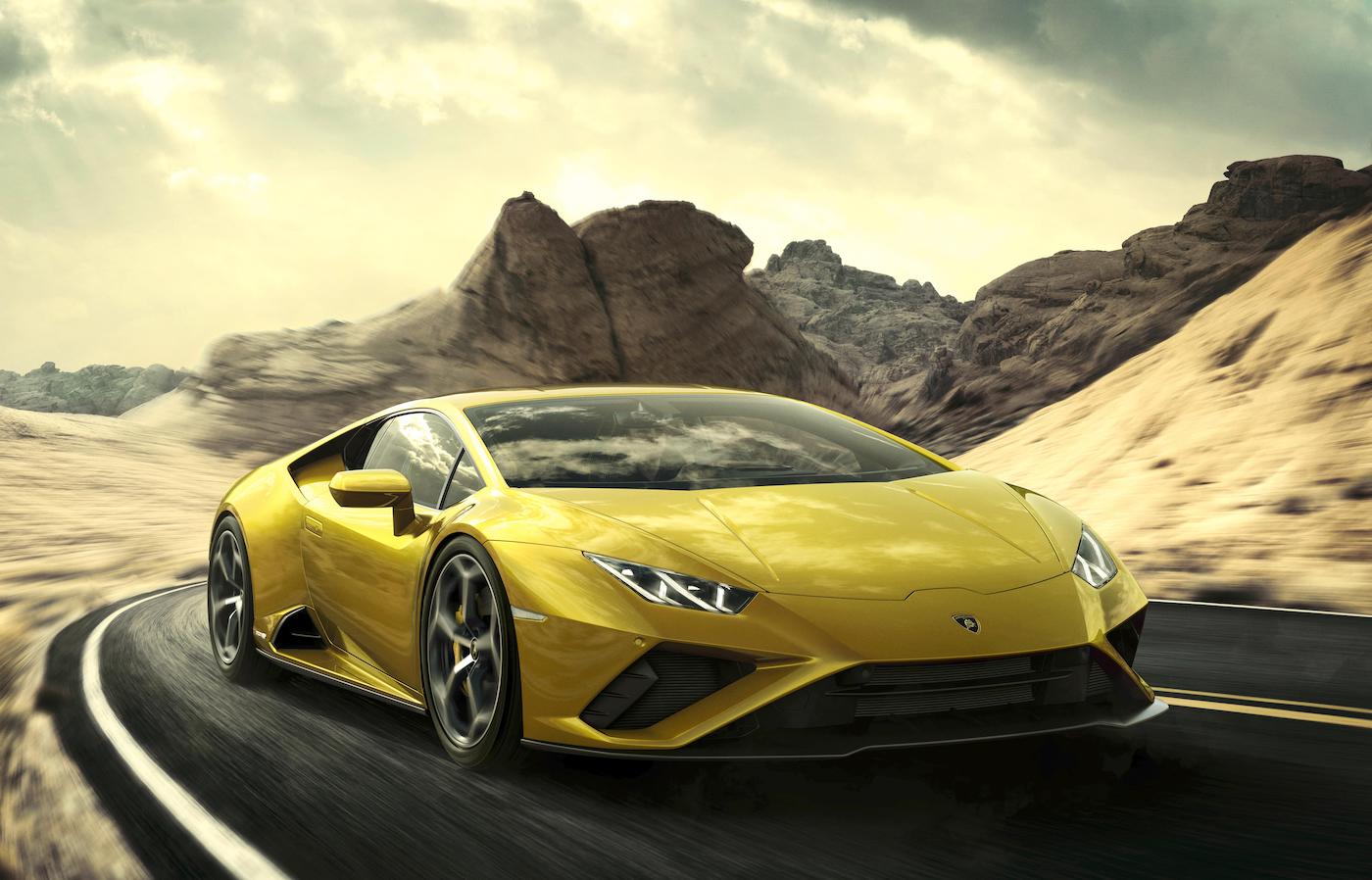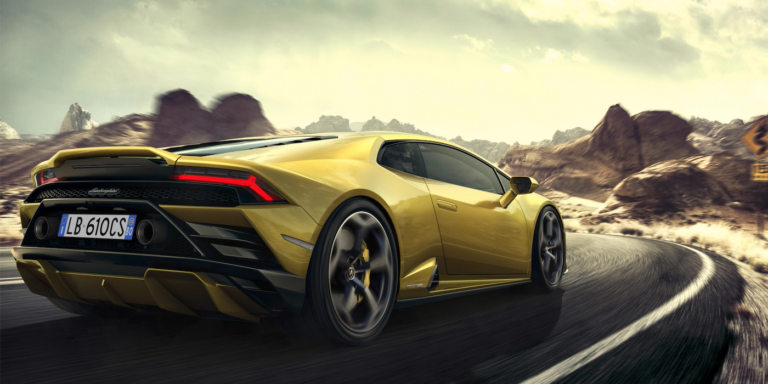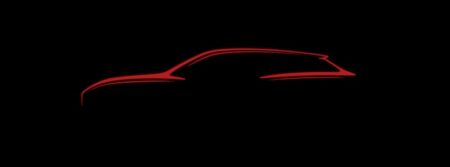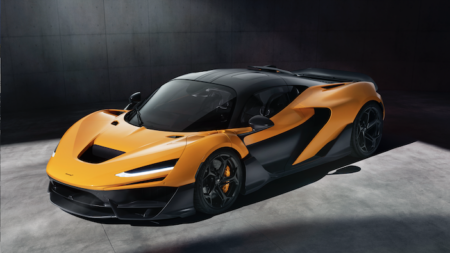Lamborghini has revealed a version of the Huracán that should appeal to lovers of old-school sports car setups, as it promises rear-drive thrills. The Huracán EVO Rear-Wheel Drive (RWD) delivers 610hp (449kW) at 8,000rpm and 560Nm at 6,500 rpm to the rear wheels, in a package that weighs 1,389kg (2.28kg/hp). The result is a top speed of 201mph (325km/h) and a 0-62mpg (100km/h) time of 3.3 seconds, though Lamborghini stresses that the Huracán EVO RWD is not focused on straight-line speeds or lap records: instead the focus is on being an “instinctive driver’s car”.
The V10-powered car will certainly supply thrills, but safety is aided by the specially tuned Performance Traction Control System (P-TCS), calibrated to deliver torque even during the phase when the car is realigning following drifting or side-slipping.
Rather than delivering a sharp decoupling, waiting for the car to become completely stable before delivering torque again, as is the case with many traction control systems, the P-TCS delivers torque in advance, avoiding a harsh torque cut for improved traction when exiting a corner.
The P-TCS intervention is calibrated according to the Huracán EVO RWD’s driving modes, selected via the steering wheel’s ANIMA button (Adaptive Network Intelligent Management: ‘soul’ in Italian). In Strada, the P-TCS minimises rear-wheel slippage by managing torque delivery on low-adhesion surfaces.
In Sport mode, the P-TCS dials up the fun, as the rear wheels can slide during acceleration, for easy and safe drifting. The system recognises conditions where the angle of oversteer increases rapidly and limits torque delivery to the rear wheels, helping the driver to control and stabilise the car.
In Corsa mode, the P-TCS is calibrated to achieve the rear-wheel slip that optimises the car’s traction and agility when exiting a corner, and improves the smoothness of intervention by 30% compared to the previous Huracán RWD model. According to Lamborghini the setup also improves corner-exit traction by 20% and enhances oversteer by 30%.

The Huracán EVO RWD’s hybrid chassis integrates lightweight aluminium and carbon fibre with an aluminium and thermoplastic resin body, with that 1,389kg dry weight distributed 40/60 front/rear. The car sits on a double-wishbone suspension with overlapped quadrilaterals and passive shock absorbers.
Further dynamic features include electro-mechanical, servo-assisted Lamborghini Dynamic Steering (LDS) tuned specifically for the RWD model for maximum feedback, ventilated and cross-drilled steel brakes, and 19in Kari wheels with bespoke Pirelli P Zero tyres. 20in rims and carbo-ceramic brakes are available as an option.
“This car reminds the driver of Lamborghini’s pure engineering origins: the driver is at the centre of the Huracán EVO RWD’s performance, with unfiltered feedback and an emotive and more engaging driving experience controlled by the pilot,” stated Stefano Domenicali, chairman and CEO of Automobili Lamborghini.





